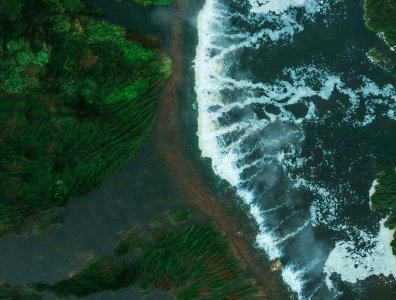Climate hindsight: Leading in a crisis
In February 2023, the Te Matau-a-Māui Hawke’s Bay region was devastated by the impact of Cyclone Gabrielle. The cyclone caused devastation and loss to businesses, property and heartbreakingly, lives.
It was also the costliest tropical cyclone on record in the Southern Hemisphere, with total recovery costs estimated to be at least NZ$14.5 billion (PHCC, 2023). Insurance claims, when combined with the Auckland anniversary day floods, amounted to far more than all other extreme weather events claims this century ($1.84 billion Auckland and $1.65 billion Hawke’s Bay).
Speaking at an Institute of Directors Chapter Zero New Zealand webinar in April, Climate hindsight: Governance lessons from Hawke’s Bay, directors Caren Rangi ONZM MInstD and John Loughlin CFInstD and former Chief Executive of the Insurance Council Tim Grafton, highlighted the need to be thinking long term and strategically, even during a crisis, and to ensure climate mitigation and transition is on the board agenda.
Having governed businesses through takeovers, receiverships, sales, kiwifruit Psa outbreaks, covid-19 and now Cyclone Gabrielle, John says that all crises tend to take you by surprise even if they are on the risk register.
Two key differences between Cyclone Gabrielle and previous crises were the speed and, with cellphone towers out, the lack of communication. While every crisis is different, the priority for directors is to rapidly assess the status of the crisis, importantly getting to grips with what you know, and what you don’t know. And while knowledge may be imperfect and incomplete, the need to get certainties about what you don’t know is critically important.
He also emphasised the importance of staying calm, as people are looking to the chair and board for leadership in these situations. The response of governance has the ability to stabilise or destabilise the ship. John commented that “your job [as a director and board] is to be calm and measured and objective, getting everybody into the right space.”
That being said, he stressed the need to respect governance/management boundaries, understand the pressures on management, support them, set them up to succeed, and share the load, particularly in areas such as stakeholder management. “You need to be hard-nosed in judging yourself as to whether you’re adding value or not.”
While boards are normally focussed on what success looks like, in a crisis they need to turn their minds to what could make things worse – understanding what an abject failure looks like, how bad things could get and what you could do to stop it from getting that bad. It’s also important to prioritise – with everyone under pressure you can’t do everything.
For Caren, collaboration was one of the keys to success, both during the crisis and recovery. She highlighted the role of governance in supporting and enabling the collaboration of others, and balancing what can seem like competing interests, especially during the height of the crisis, as well as facilitating the learning of lessons together.
She also pointed to the need to keep a focus on long-term thinking, despite the short-term pressures during a crisis. She stressed that balancing the immediate issues against your responsibility to keep looking to the long-term horizon should be a normal part of board functioning, despite how difficult that can be during a crisis. “It’s very easy to get consumed by what needs to be done right there on the day.”
Tim similarly reinforced the need to be looking at short-, medium- and long-term horizons and for business strategies to reflect the role of climate change under different scenarios, including the impact on value chain and insurance costs/availability. He also emphasised the need to evaluate how you can become more resilient and the need to transition to be more risk-reduced and climate-resilient.
Bearing the risk of natural disasters comes with significant costs, and insurance cannot cover all of it. The ‘insurance gap’ for Cyclone Gabrielle, the difference between total losses and insured losses, was around 30%, but this doesn’t include the total economic impact or the environmental, health and social impacts and costs. Tim noted that insurance is becoming the lead indicator of the cost of climate change with increasing concerns about insurance costs and potential withdrawal. It is most immediately crystallising the financial risks associated with climate change.
The short-term and long-term risks and impacts of climate change are a key responsibility of the board, notably in terms of foreseeable risk, and, therefore, need to be part of key strategic discussions.
Lessons for directors
- Ensure climate change mitigation and transition are on your agenda
- Look at risk management and distinguish between long-term and crisis risks
- Be cognisant of your short-term and long-term responsibilities
- Look at delegations and ensure management have the delegations needed in a crisis
- Ensure nimble and agile decision-making, e.g. working group or committee
- Build long-term resilience



